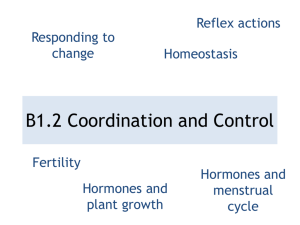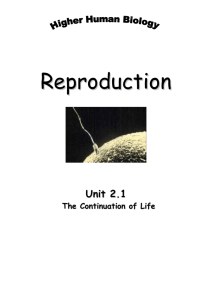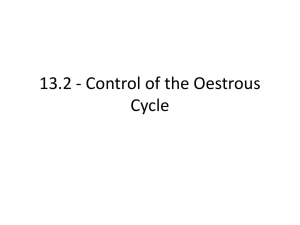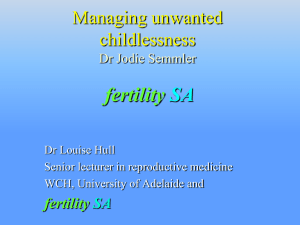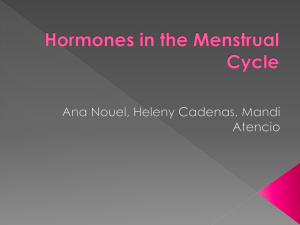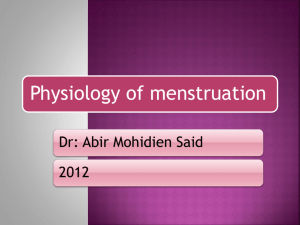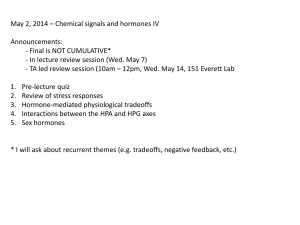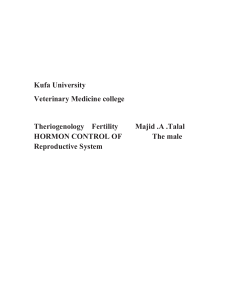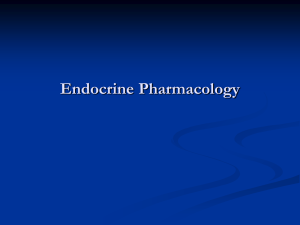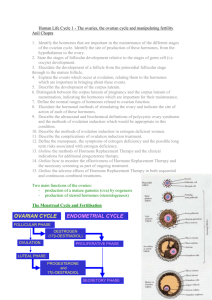08 Human Reproduction
advertisement
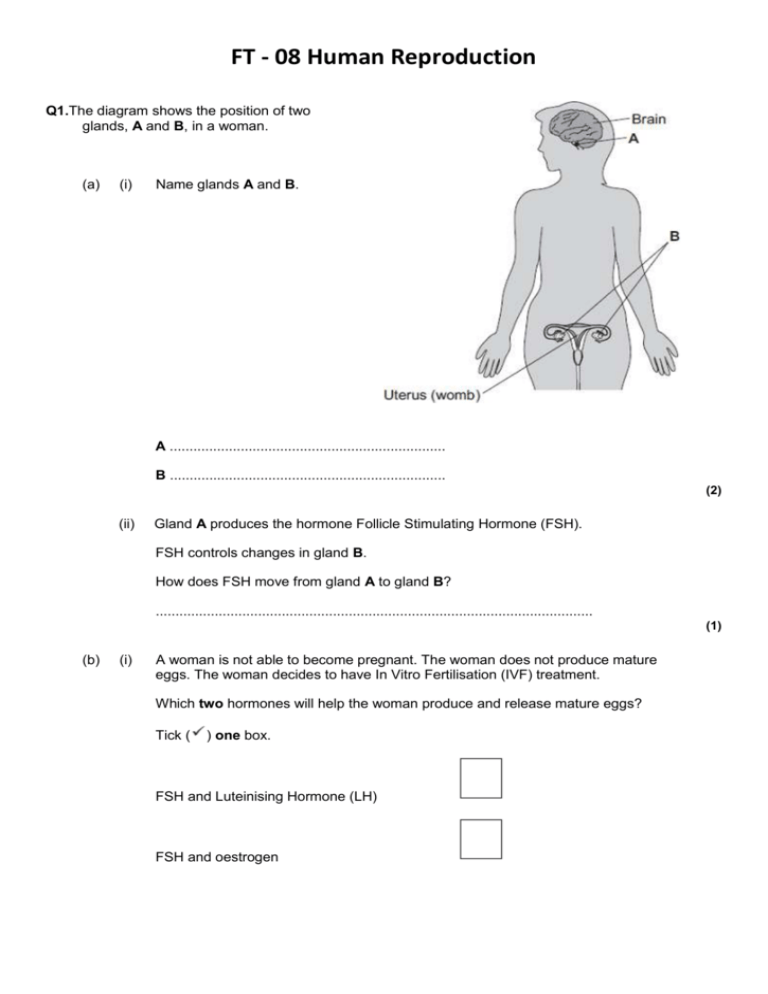
FT - 08 Human Reproduction Q1.The diagram shows the position of two glands, A and B, in a woman. (a) (i) Name glands A and B. A ...................................................................... B ...................................................................... (2) (ii) Gland A produces the hormone Follicle Stimulating Hormone (FSH). FSH controls changes in gland B. How does FSH move from gland A to gland B? ............................................................................................................... (1) (b) (i) A woman is not able to become pregnant. The woman does not produce mature eggs. The woman decides to have In Vitro Fertilisation (IVF) treatment. Which two hormones will help the woman produce and release mature eggs? Tick ( ) one box. FSH and Luteinising Hormone (LH) FSH and oestrogen Luteinising Hormone (LH) and oestrogen (1) (ii) Giving these hormones to the woman helps her to produce several mature eggs. Doctors collect the mature eggs from the woman in an operation. Describe how the mature eggs are used in IVF treatment so that the woman may become pregnant. ............................................................................................................... ............................................................................................................... ............................................................................................................... ............................................................................................................... ............................................................................................................... ............................................................................................................... (3) (iii) IVF clinics have been set a target to reduce multiple births. At least 76% of IVF treatments should result in single babies and a maximum of 24% of treatments should result in multiple births. Suggest one reason why the clinics have been set this target to reduce multiple births. ............................................................................................................... ............................................................................................................... (1) (c) Two clinics, R and S, used IVF treatment on women in 2007. Doctors at each clinic used the results of the treatments to predict the success rate of treatments in 2008. The table shows the information. Total number of IVF treatments in 2007 Number of IVF treatments resulting in pregnancy in 2007 Predicted percentage success rate in 2008 Clinic R 1004 200 18–23 Clinic S 98 20 3–56 (i) Compare the success rates of the two clinics in 2007. ............................................................................................................... ............................................................................................................... (1) (ii) The range of the predicted success rate in 2008 for clinic R is much smaller than the range of the predicted success rate for clinic S. Suggest why. ............................................................................................................... ............................................................................................................... ............................................................................................................... ............................................................................................................... (2) (Total 11 marks) HT - 08 Human Reproduction Q2. (a) Describe, as fully as you can, how a human foetus gets rid of the carbon dioxide produced during respiration. ..................................................................................................................................... ..................................................................................................................................... ..................................................................................................................................... ..................................................................................................................................... (3) (b) The female menstrual cycle is controlled by a number of hormones. The graph below shows the concentrations of four of these hormones at different times during the menstrual cycle. The functions of the four hormones include: FSH – stimulates the development of immature cells into eggs in the ovary. LH – stimulates the release of the mature egg cell. Oestrogen – stimulates production of LH, but inhibits FSH production. Progesterone – inhibis production of both LH and FSH. Use this information to explain as fully as you can: (i) how the concentration of oestrogen can affect and control the development and release of an egg during the monthly cycle; ........................................................................................................................... ........................................................................................................................... ........................................................................................................................... ........................................................................................................................... ........................................................................................................................... ........................................................................................................................... (3) (ii) why progesterone continues to be produced throughout pregnancy. ........................................................................................................................... ........................................................................................................................... ........................................................................................................................... ........................................................................................................................... ........................................................................................................................... ........................................................................................................................... (3) (c) Explain, as fully as you can, how one or more of these hormones could be used to treat infertility. ..................................................................................................................................... ..................................................................................................................................... ..................................................................................................................................... ..................................................................................................................................... ..................................................................................................................................... ..................................................................................................................................... (3) (d) A hormone called mifepristone is used in low doses as a female contraceptive. Higher doses can be used to induce an abortion. As a consequence mifepristone is often referred to as ‘the morning-after pill’. The use of mifepristone is currently tightly controlled by the medical profession. Evaluate the benefits and problems which might arise from making this hormone more freely available. ..................................................................................................................................... ..................................................................................................................................... ..................................................................................................................................... ..................................................................................................................................... ..................................................................................................................................... ..................................................................................................................................... ..................................................................................................................................... ..................................................................................................................................... ..................................................................................................................................... ..................................................................................................................................... ..................................................................................................................................... (4) (Total 16 marks) M1.(a) A – pituitary allow hypothalamus (i) 1 B – ovary / ovaries 1 (ii) in blood (stream) accept in plasma ignore dissolved 1 (b) (i) FSH and Luteinising Hormone (LH) 1 (ii) fertilised OR reference to sperm 1 form embryos / ball of cells or cell division 1 (embryo) inserted into mother’s womb / uterus allow (fertilised egg) is inserted into mother’s womb / uterus 1 (iii) any one from: • multiple births lead to low birth weight • multiple births cause possible harm to mother / fetus / embryo / baby / miscarriages allow premature ignore reference to cost / ethics / population 1 (c) (i) any one from: • almost identical allow S (slightly) more successful • both approximately 20% 1 (ii) larger numbers (in clinic R) (in 2007) allow only 98 (in S) (compared to 1004 (in R)) 1 results likely to be more repeatable (in 2008) allow more reliable do not accept more reproducible / accurate / precise 1 [11] M2. (a) moves from foetal blood to mothers blood via placenta for 1 mark each 3 (b) (i) 3 of e.g. rising levels of oestrogen result in an increased LH level when LH level peaks egg release stimulated any 3 for 1 mark each 3 (ii) 3 of e.g. continues to inhibit FSH production and to inhibit LH productionso that no eggs are matured or releasedBecause of danger to later conceived fetus if 2 develop in uterus any 3 for 1 mark each 3 (c) 3 of e.g. FSH could stimulate eggs to mature in woman whose own level of FSH too low LH could stimulate egg release where woman’s own LH production depressed by oestrogen any 3 for 1 mark each 3 (d) maximum two benefits e.g. prevents unwanted pregnancy when mother’s physical health at risk or when mental health at risk or following e.g. rape maximum two problems e.g. involves killing ‘foetus’ rather than preventing gametes meeting may lead to irresponsible attitude to sexual behaviour reference to ethical/religious attitudes for 1 mark each 4 [16]
